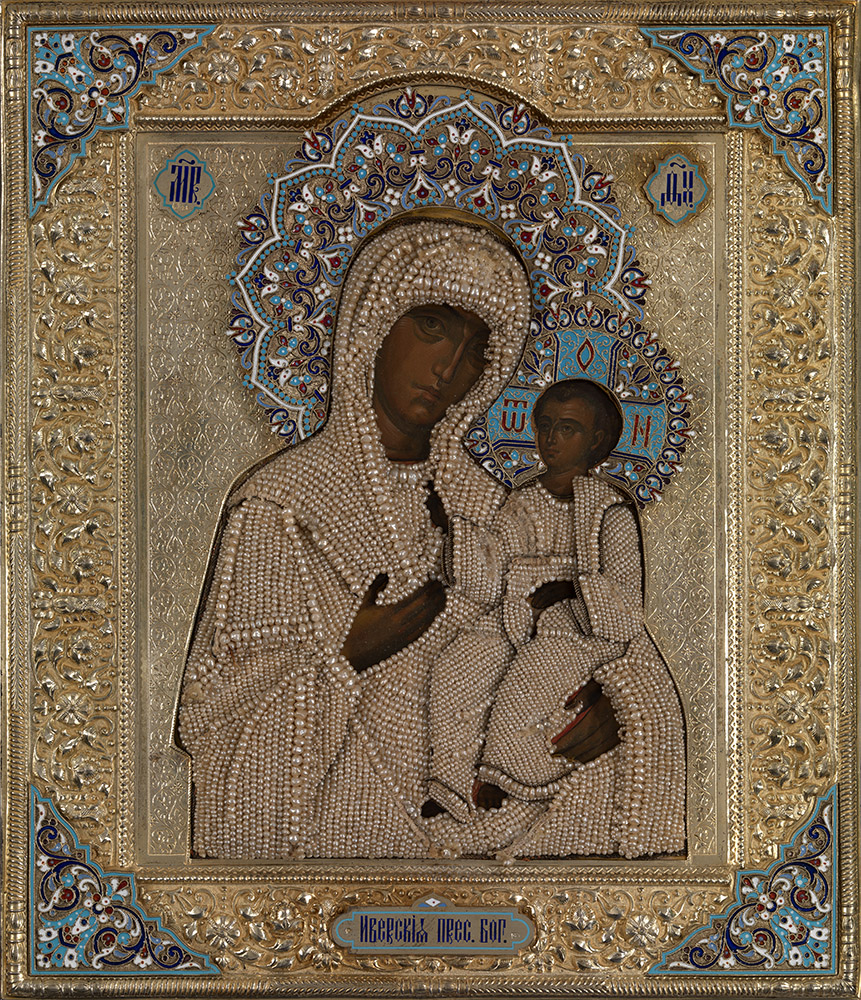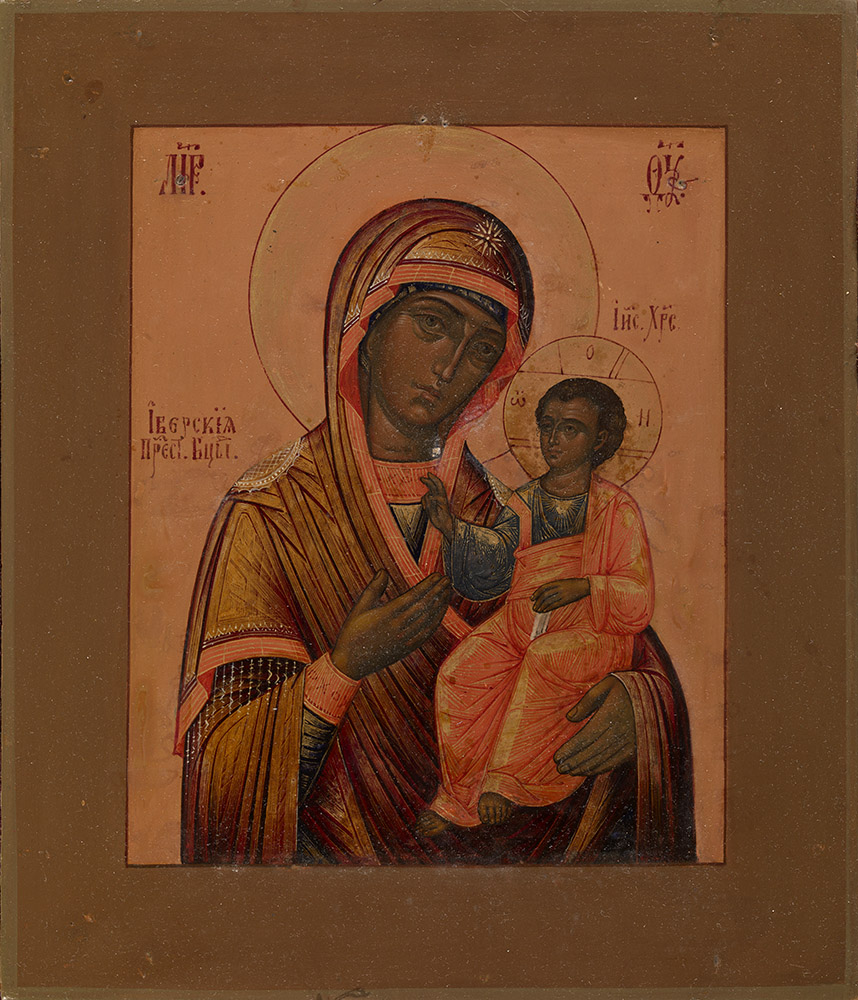MacDougall Auctions 2-3 December 2009
2 December 2009

* 26. THE IVERSKAYA MOTHER OF GOD IN A SILVER, RIVER PEARL AND ENAMELLED OKLAD
MAKER'S MARK OF SERGEI ZHAROV IN CYRILLIC, MOSCOW, CIRCA 1908
32 by 26.5 cm.
46,000-50,000 pounds
Related literature: For similar icons, see L. Schitova, Russian Icons in Precious Oklads, late 17th-early 20th Centuries, Sergiev Posad, 2005, pp. 221, 264.
The oklad is hallmarked ‘84, marked with a stamp of the Moscow Assay Board 1908-1926; also a stamp SG – that of Sergei Ivanovich Zharov, the owner of gold and silversmith workshops in Moscow 1899-1908. Oklads from his workshops are kept in the State History Museum of Moscow, in the Museum of Sergiev Posad and in private collections.
The iconography of the Iverskaya Mother of God became very popular in Russia after two copies of an ancient wonder-working icon from the Iveron Monastery on Mount Athos were brought to Moscow in the middle of the 17th century. The Iverskaya was especially venerated from the second half of the 19th century, particularly in Moscow, where a Greek copy of the ancient icon was kept. This is demonstrated by the large number of smaller icons for private devotion from that period, adorned with lavish oklads. Such images were often used as gifts to various persons of high standing. This icon is a perfect example of such a gift, as seen from the inscription on the reverse of the icon: “A keepsake to the Most Kind Milord Pavel Nikolaevich Kuropat kin from A.V”.
The overly lavish and precious oklad in the Russo-Byzantine style, imitating medieval décor, corresponds to the high status of the owner. Here the artist clearly keeps in mind the image of the ancient wonder-working icon, decorating his own work with the precious composite oklad, consisting of wide silver margins with embossed foliated ornament and a basma background depicting elaborate vegetation and imitating filigree work. The cut-out haloes and corners are richly decorated with filigree and filled with multicoloured enamel. The wonderful richness and beauty of the icon is further enhanced by the decoration of the robes, embroidered with river pearls. The ornamentation of the haloes employs old Russian motifs, reflecting the renewed interest in the Byzantine style in Russian art at the turn of the 20th century.

Notes on symbols:
* Indicates 5% Import Duty Charge applies.
Ω Indicates 20% Import Duty Charge applies.
§ Indicates Artist's Resale Right applies.
† Indicates Standard VAT scheme applies, and the rate of 20% VAT will be charged on both hammer price and premium.